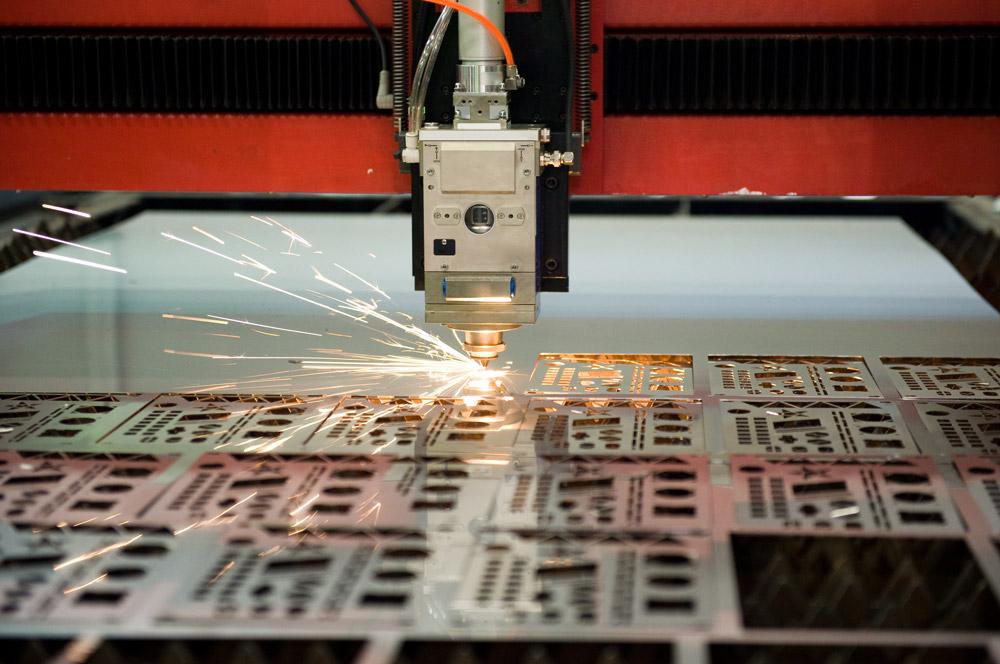When it comes to laser cutting, choosing between fiber and CO2 laser is a pivotal decision for many industrial manufacturers. The choice hinges on factors like material type, cutting speed, and operational costs. Understanding the distinct features of these two types of lasers can significantly impact production efficiency and cost-effectiveness.

Understanding Laser Technology
Before diving into the differences, it’s vital to grasp the basic principles of laser technology. Lasers generate concentrated light beams capable of cutting through various materials with precision. The two most popular types in manufacturing are fiber lasers and CO2 lasers.
What is a Fiber Laser?
Fiber lasers use optical fibers doped with rare earth elements. These lasers are known for their high efficiency, low maintenance, and ability to cut through reflective materials like aluminum and copper. They are especially popular for their rapid cutting speeds and energy efficiency.
What is a CO2 Laser?
CO2 lasers operate by exciting carbon dioxide gas to produce a laser beam. These are traditionally used for cutting non-metal materials like wood, acrylic, and glass, but they can also cut through metals like steel. CO2 lasers are known for their smooth cutting edges on thicker materials.
Key Differences Between Fiber and CO2 Lasers
Material Compatibility
The material you intend to cut plays a significant role in choosing the right laser. Fiber lasers excel at cutting reflective metals, while CO2 lasers are better suited for non-metal materials.
Cutting Speed and Precision
Fiber lasers offer faster cutting speeds, making them ideal for high-volume production environments. On the other hand, CO2 lasers provide a smoother finish, which is essential for applications requiring high precision.
Operational Costs
In terms of operational costs, fiber lasers generally have lower running costs due to their energy efficiency and lower maintenance requirements. CO2 lasers, while effective, can be more expensive to maintain over time.
Initial Investment
The initial investment in laser technology is a crucial factor. Fiber lasers often come with a higher upfront cost, but their efficiency can lead to cost savings in the long run. CO2 lasers might be cheaper initially but could incur more maintenance costs.
Applications in Industry
Automotive Industry
In the automotive industry, fiber lasers are preferred for cutting metal components due to their speed and precision. CO2 lasers are typically used for non-metal applications in this sector.
Electronics Manufacturing
For electronics, where precision is paramount, fiber lasers are often the go-to choice. They handle small, intricate cuts efficiently.
Textile and Apparel
In textile and apparel manufacturing, CO2 lasers are favored for their ability to cut and engrave fabrics smoothly.
Environmental Considerations
Environmental impact is an important factor in decision-making. Fiber lasers are more energy-efficient, reducing the carbon footprint. CO2 lasers require more power, impacting energy consumption.
Future Trends in Laser Technology
The future of laser technology is promising, with advancements aimed at enhancing efficiency and precision. Innovations in fiber laser technology are expected to further decrease operational costs and improve cutting capabilities.
Conclusion
When choosing between fiber and CO2 laser, consider your specific needs and priorities. Whether it’s the type of material, cutting speed, or cost implications, each laser offers unique advantages. By understanding these factors, manufacturers can make informed decisions that enhance productivity and profitability. For further information, you can visit this guide to precision metal cutting.

FAQs
What materials can fiber lasers cut?
Fiber lasers are suitable for cutting a wide range of metals, especially reflective ones like aluminum and copper.
Are CO2 lasers more expensive to maintain?
Yes, CO2 lasers generally have higher maintenance costs compared to fiber lasers.
Which laser is better for non-metal materials?
CO2 lasers are better suited for non-metal materials such as wood and acrylic.
This article contains affiliate links. We may earn a commission at no extra cost to you.

